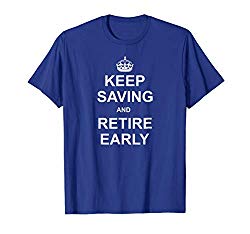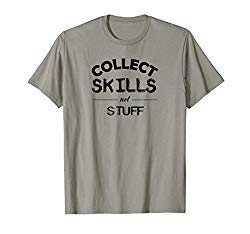Celebrate Labor
Yesterday was Labor Day. Labor. Work.
Those of us who are financially independent likely achieved it through hard work. The reality is that most wealthier people didn’t inherit their money, they earned it and saved it.
And we’re not striving to stop working altogether once we reach FI. That’s another myth, perpetuated by the “RE” part of the FIRE acronym. We seek to retire from traditional W2 work, not from all work.
We’re striving to focus on work that’s fulfilling and fun. It’s kind of a Holy Grail, but it’s attainable. I’m living proof of that as my early semi-retirement has enabled me to start a growing business that I love. It’s work, but good work that scratches my fun-itch.
So back to Labor Day. Where did it come from?
In short, as the rapid industrialization of America continued unabated in the late 1800s, conditions for workers continued to spiral downward. Strikes and riots ensued, and over a period of years in the early 1890s the idea of a “workingman’s holiday” caught on.
It grew legs, and then Congress passed an act in 1894 making Labor Day a legal holiday.
If you’re a worker, Labor Day celebrates you. So in reality it’s a celebration for the vast majority of us.
And just in time the Bureau of Labor Statistics has published some cool and insightful factoids about the current state of work in America. The BLS facts are in bold.
Employment continues to expand way beyond the January 2008 peak prior to the recession. There are a ton of jobs out there, plain and simple. And no, they’re not all low paying service jobs.
In tech there’s a massive talent shortage, and over 700,000 vacant jobs. These jobs pay well. America is still the land of opportunity, so if you want the opportunity, learn the skills and go after them.
Unemployment is 3.7%, still incredibly low and only one tick off the record 50-year low that we recently hit.

Notice how unemployment has declined the whole time during this unprecedented bull market that’s approaching the age of 10.
There are 7.3 million non-farm job openings in America. Again, if you can’t find a job you’re likely not trying. It doesn’t mean you’re guaranteed a job you’ll love or that pays what you want, but you can get a job.
3.4 million people quit their job in June 2019. I think my buddy Zach from Four Pillar Freedom is in that group.
Average weekly pay rose 2.6% from July 2018 to July 2019. After inflation that equates to a real pay increase of .8%. Despite the inaccurate media coverage that dominates the airways, this shows that median incomes in America continue to outpace inflation. This is a simple factoid dating back to 1984 as I showed in a previous post.
Paid leave benefits are available to more than three-quarters of all workers on average. This was higher than I would have guessed.
For those who have employee provided health coverage, they pay on average 20% of the cost of their plan for single coverage and 32% for family coverage. I work for the government and I pay more than 20% for single coverage. I’m a tad peeved about this.
Output per hour of work grew 1.8% from the 2nd quarter of 2018 to the second quarter of 2019. Despite most folks disliking their jobs and not feeling engaged, they managed to turn on the juice a bit recently and get shit done. That matches this Gallup study that says engagement is on the rise, but still at only 34%. Kudos, I guess 🙂
5147 people died on the job in 2017. This is an improvement over the 1990s when more than 6,000 people per year died on the job and the workforce was much smaller. Well at least they died doing something they love. Oh, wait…
Union membership continued its steady decline over time, down to 10.5% in 2018. To compare, in 1983 it was 20.1%. This is likely due to the parallel loss of manufacturing jobs in America during the same time frame. No surprise.
Jobs requiring a 4-year bachelor’s degree comprise 22% of all jobs in 2018. For 18 of the 30 occupations projected to grow the fastest between 2016 and 2026, some post-secondary education is typically required for entry. The world is only getting more complex, and the best jobs are right there along with it. I’m of the personal opinion that the skills necessary for these fast growing occupations can be acquired free and without going into debt from an overpriced college in most cases.
So there you have it folks, some nice data points about labor for Labor Day. I hope you enjoyed your day off and now get back to work!!!










































Happy Labor Day Dave! I enjoyed a nice 3-day weekend in upstate New York to celebrate.
I pay about 22% ($4700) of the bill for my “family” coverage for myself and my wife, so a little better than average. That number will remain flat if we add kids to the equation which is a bit unusual. The cost-share side of things (deductible/coins/co-pay) has really changed over the years though and is a bit of a moving target depending on the employer.
Working in healthcare, I typically don’t keep up with wage inflation and find I need to switch jobs occasionally to make up he difference.
Regards,
Max
Thanks for the comment and I can’t wait to get back up to the Daks!
The labor market is really good right now. Businesses seem to be losing confidence in the economy so I expect unemployment to tick up pretty soon. It’s pretty amazing there are so many openings in tech. Corporations need to figure out how to retain the engineers. Maybe treat them like human occasionally.
Ha! Engineers are not robots, should be on a shirt 🙂
Interesting statistics. I had no idea there were 700,000 unfilled tech jobs – sometimes I wonder if I chose the wrong field. Then again, I am a tech idiot. 😉 However, I think I pay under 20% for my topnotch health care benefits. Don’t hate me!
No hate here, but it’s good to inform people that our benefits in the Federal Government are not as stellar as most think. They’re great in some areas, and lacking in others.
The Garfield comic had this great line decades ago about labor day, “hire some jerk, then send him away to celebrate work by playing all day.” Absolutely brilliant!
Love it!
20% for single coverage health care? Sometimes I question my decision to work in health care, and then I read stats like these. We might not get paid nearly as much as, say, those in tech or finance. But health care is totally free for me (except an office visit co-pay of $10) and will be for my partner and step-kids once we’re officially married. It’s easy to forget how quickly those costs add up. Interesting stats!
Most of the big contractors at my agency also have their healthcare plans paid in full. But not for me